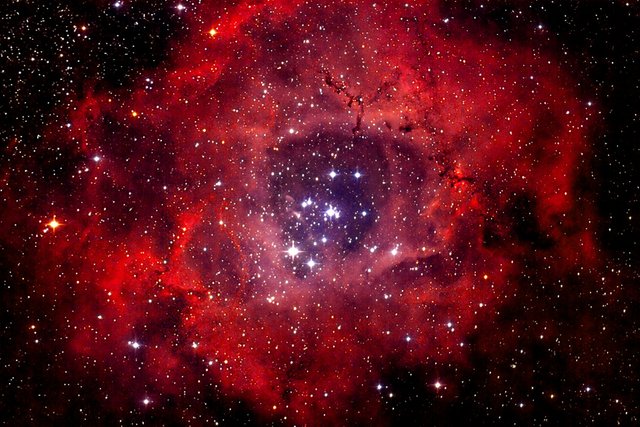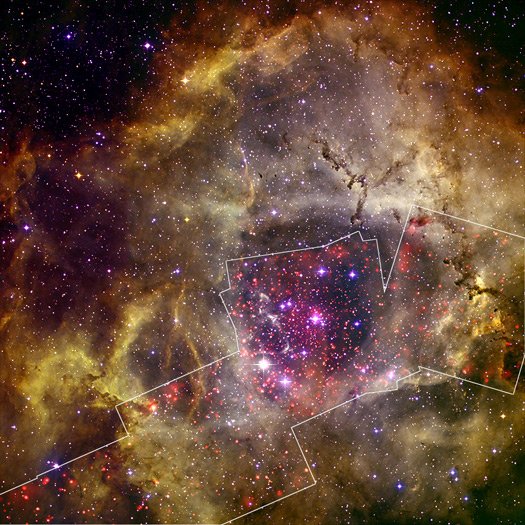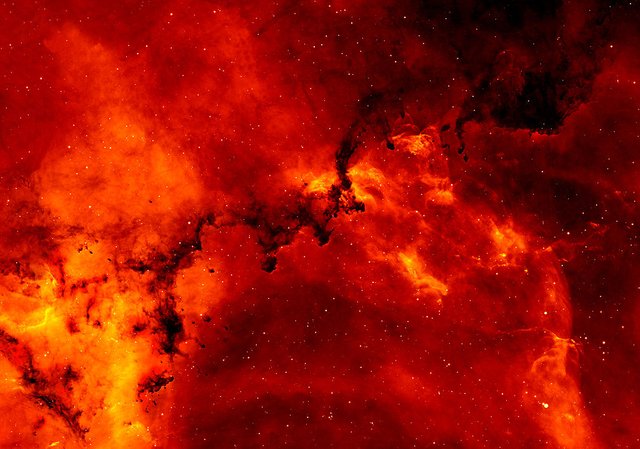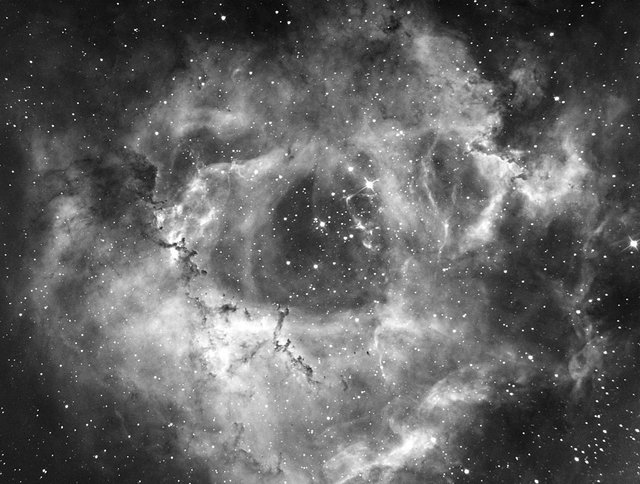NGC 2237: Rosette Nebula

The Rosette Nebula (H-Alpha + RGB). Image source: [1]
The Rosette Nebula is a vast cloud of gas and dust, it is also known to be a giant stellar cradle. It is found in the constellation of the Unicorn at 4,500 light years from our solar system and is approximately 130 light-years in diameter. The radiation of the young stars excites the atoms of the nebula, causing them to emit radiation, so it is a nebula of emission. The mass of the nebula is estimated at about 10,000 solar masses.
Emission Nebula
They are interstellar regions composed of gas (mainly hydrogen and helium) and dust, which emit energy thanks to the ionization of this gas usually produced by a nearby star. They differ from the dark or absorption nebulae (Horsehead Nebula in Orion) and reflection nebulae (Merope Nebula). The best known of the emission nebulae is the Great Orion Nebula, excited by the stars of the trapeze cumulus.
Discovered in 1784 by William Herschel. They are young, blue stars that emit ultraviolet light that is the cause of the brightness of the nebula. Although the nebula is distinguished by small telescopes, this cumulus requires apertures between 200 and 300 millimeters for observation. Several structures of dark dust are also appreciated, the nature of which is under study, although they seem to be eroded by the energy and wind of the giant stars.
More details here: Rosette Nebula

Optical and X-ray (red) view of the Rosette Nebula. Image source: [2]

A close up view of the Rosette Nebula. Image source: [3]

The Rosette Nebula captured with an H-alpha filter. Image source: [4]

So interesting, nebulae are such fascinating subjects. Thanks for sharing.
which lense I need to see this
interesting video sir..